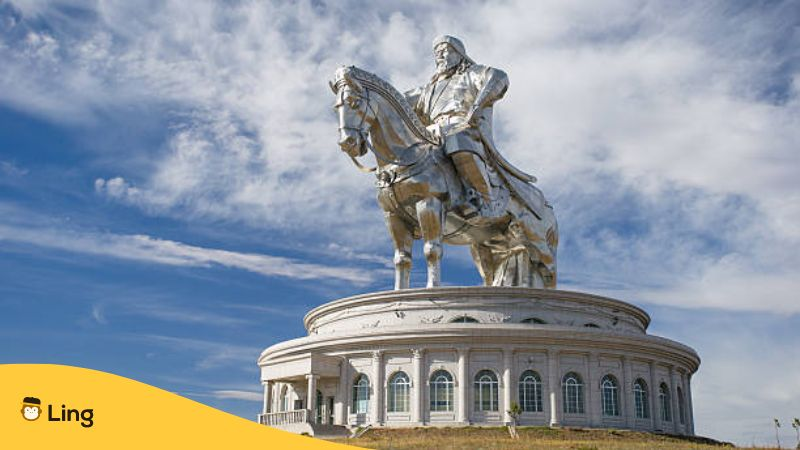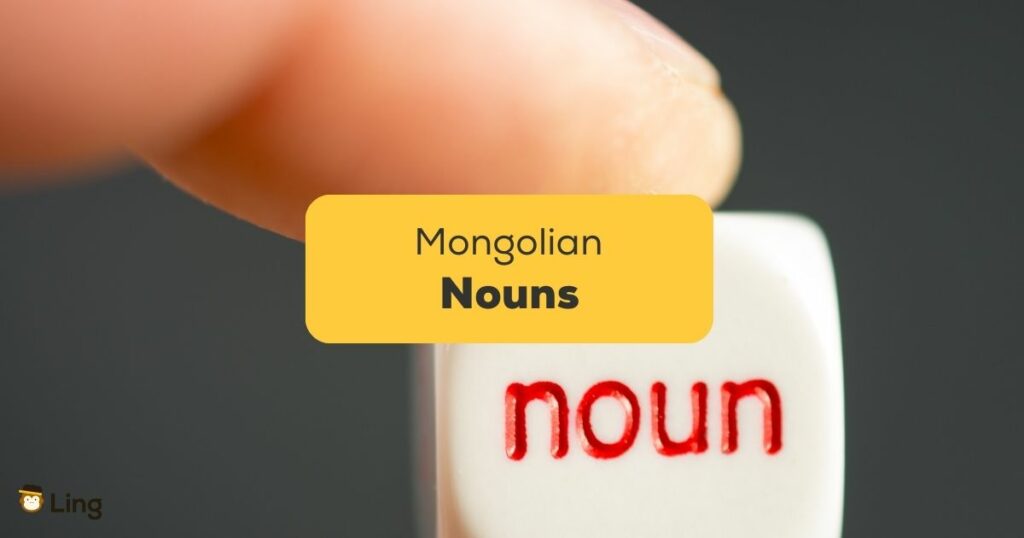Get ready to level up your travel game by mastering Mongolian nouns! These little language gems are your ticket to epic daily interactions, hilarious market haggling, and heartwarming chats with locals. Need directions to the coolest yurt party? Craving a plate of “khorkhog” without the confusion? With noun skills, you’re the communication champ. Plus, impressing nomadic herders and becoming a cultural connoisseur as you know how to speak Mongolian? Yep, nouns do that too. So, whether you’re camel-back cruising the Gobi or unearthing ancient tales, sling those nouns like a pro, soak in Mongolia’s magic, and craft memories that’d make Genghis Khan proud!
Why Learn Mongolian Nouns
Diving into the Mongolian language? Nouns are your starting point! Understanding Mongolian nouns not only provides a foundation for sentence construction but also gives you insights into the culture and thought processes of Mongolian speakers. Here are five fascinating facts about Mongolian nouns to pique your interest:
- Why Learn Mongolian Noun Rules?
- Mongolian nouns offer an enthralling avenue into the heart of this ancient language. Understanding the rules that govern them is crucial for anyone aiming to master Mongolian. Here are five compelling facts about Mongolian noun rules:
- Agglutination in Action: In Mongolian, nouns adhere to an agglutinative structure. This means that they can accumulate a series of suffixes to convey various grammatical meanings. It’s not unusual to see a base noun morph with additional endings that detail its role in a sentence.
- The Eight-Case System: Mongolian nouns can take on one of eight grammatical cases to clarify their function in a sentence. These cases, indicated by specific suffixes, can tell you if the noun is the subject, the direct object, shows possession, and more.
- Gender-Neutral Ground: Refreshingly straightforward, Mongolian nouns don’t possess gender. You won’t find the distinctions of masculine, feminine, or neuter as in languages like Spanish or German. Every noun is treated uniformly in this respect.
- Plurality Principles: While Mongolian does have plural forms for nouns, they are often context-dependent. Unlike English, where plurals are frequently used, Mongolian often omits them when the context is clear. When employed, plurals are typically indicated through certain suffixes.
Singular Nouns
In the Mongolian language, a singular noun refers to just one person, place, thing, or idea, similar to its function in English. The Mongolian language, with its agglutinative structure, employs a variety of suffixes for grammatical functions, but the basic form of a noun without any additional suffix is typically its singular form. Unlike English, which uses “a” or “an” as indefinite articles to indicate singularity (e.g., “a book”), Mongolian does not have articles. Therefore, the context and lack of plural markings often determine the singularity of a noun in Mongolian. For instance, “ном” (nom) means “book” in singular, while its plural can be indicated in various ways depending on the context.
| English | Mongolian | Pronunciation |
|---|---|---|
| Apple | Алим | Alim |
| Chair | Газар | Gazar |
| Dog | Нохой | Nokhoi |
| Sun | Нар | Nar |
| Book | Ном | Nom |
| River | Гол | Gol |
| Moon | Сар | Sar |
| Car | Машин | Mashin |
| Tree | Мод | Mod |
| House | Гэр | Ger |
Plural Nouns
In Mongolian, a plural noun represents more than one of a particular person, place, thing, or idea. Unlike English, which often uses the suffix “-s” or “-es” to denote plurality (e.g., “books”), Mongolian employs different methods to convey the same concept. One common way to indicate plurality is by adding certain suffixes, such as “-нууд” (nuud) or “-чууд” (chuud). For example, the word for “book” in Mongolian is “ном” (nom) in its singular form, while its plural form is “номнууд” (nomnuud), meaning “books.”
However, Mongolian does not always require explicit plural markers, as the context in which the noun is used can often indicate its plurality.
| English | Mongolian | Pronunciation |
|---|---|---|
| Cats | Муурнаас | Muurnaas |
| Mountains | Уулсууд | Uulsuud |
| Oceans | Тэнгиснүүд | Tengisnüüd |
| Flowers | Цэцэгүүд | Tsetsegüüd |
| Computers | Компьютернүүд | Kompyuternüüd |
| Hats | Тавсанууд | Tavsanuud |
| Keys | Түлхүүрүүд | Tulhuurüüd |
| Pens | Майлзалнууд | Mailzalnuud |
| Spoons | Хамгаалахнууд | Khamgaalakhnuud |
| Guitars | Гитарнүүд | Gitarnüüd |

Proper Nouns
In Mongolian, just as in English, a proper noun (or “өөрийн нэр” in the Mongolian Cyrillic script) is a specific name for a particular person, place, or thing and always starts with a capital letter. It differentiates a unique entity from a general class of entities. For example, while “city” is a common noun, “Ulaanbaatar” (the capital of Mongolia) is a proper noun. Proper nouns in Mongolian serve the same grammatical purpose as they do in many languages: to uniquely identify specific entities within a broader category.
- Ulaanbaatar
- Gobi Desert
- Khuvsgul Lake
- Orkhon Valley
- Terelj National Park
- Karakorum
- Elsen Tasarkhai Sand Dunes
- Khorgo-Terkhiin Tsagaan Lake National Park
- Bayanzag (Flaming Cliffs)
- Hustai National Park
Common Nouns
In Mongolian, common nouns refer to general items, people, animals, or ideas, rather than specific names or titles. These nouns do not denote any particular individual or unique entity, but rather a category or class of entities. For instance, while the name “Батбаяр” (Batbayar) is a proper noun referring to a specific individual, words like “хүн” (khün), meaning “person,” or “мод” (mod), meaning “tree,” are common nouns. They describe general categories without pinpointing any specific entity within that category. Mongolian common nouns, like their counterparts in many languages, capture the everyday objects and concepts that populate conversations and texts.
Here are some examples of common nouns related to travelers.
| English | Mongolian | Pronunciation |
|---|---|---|
| Hotel | Сан | San |
| Reservation | Захиалга | Zakhialga |
| Restroom / Toilet | Суух байр | Suukh bair |
| Booking website | Захиалгааны цахим хуудас | Zakhialgaany tsakhim khudalas |
| Airport | Аэропорт | Aeroprt |
| Bus | Автобус | Avtobus |
| Taxi | Такси | Taksi |
| Mobile phone | Гар утас | Gar utas |
| Money / Cash | Сонин | Sonin |
| Menu | Захиа | Zakhia |
| Food | Сууц | Suuts |
| Mountain | Уул уурхай | Uul uurkhay |
| Sea / Lake / Ocean | Тэнгис | Tengis |
| Desert | Цагаан мод | Tsagaan mod |
| Land / Terrain | Газар нутаг | Gazar nutag |
Learn The Mongolian Language With Ling
Wow, what a thrilling journey it’s been! You’re now a true Mongolian noun master, ready to dazzle the locals with your language skills. But hold onto your horse, there’s more fun ahead! Discover some gems such as the Cyrillic alphabet, traditional Mongolian script, and other Mongolian dialects!
So if you want to sound like the Mongolian speakers, there’s a fantastic new sidekick in town – the Ling app! It’s like the ultimate language-learning sidekick you’ve always wished for, and here’s the kicker: only 15 minutes a day is all it takes to learn a spoken language. No kidding! Whether you’re into quizzes or deep-diving lessons, we’ve got the goods. So saddle up, partner, and let’s conquer Mongolian together by downloading Ling from the Google Play Store or App Store!































































